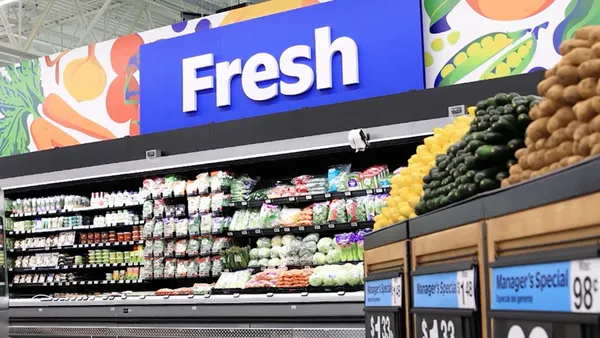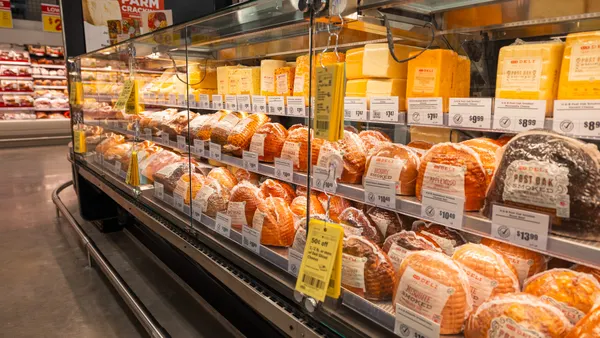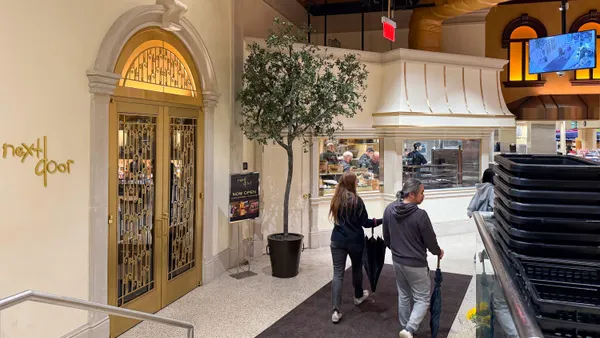Dive Brief:
- BJ’s Wholesale Club is making an assertive play for new members and a larger market share by lowering prices, expanding its digital offerings, taking a more data-driven approach to site selection and pushing into new markets.
- BJ’s recently announced it will move into Michigan next year with two metro Detroit openings in Taylor and Madison Heights. In a recent earnings call, CEO Chris Baldwin said the company is also scouting other locations around the Motor City, noting the demographics and competitive landscape line up well for the club retailer. BJ’s plans to open at least four new stores next year, with the first coming in the spring in Clearwater, Florida. The company currently operates 216 stores and 136 fuel stations across 16 states.
- During this year’s third financial quarter, net sales for the company rose 4.3% while comp sales increased 1.9%.
Dive Insight:
Just a few months after becoming a publicly traded company again, BJ’s wants to move out from the long shadows cast by Costco and Sam’s Club. And so far, the company is performing well, with recent earnings exceeding Wall Street’s estimates.
Although BJ’s sells a wide assortment of products, it leads with grocery. This includes a wide range of produce as well as private label products under brands like Wellesley Farms — all priced 25% lower than grocery stores, the company claims.
BJ’s produce sales were flat in this most recent quarter, primarily due to deflation in key categories, though these selections drive regular trips for the company’s more than 5 million members. According to a recent analysis by financial holding group Nomura, BJ’s fresh food section makes up 27% of its sales. At competitor Costco, by contrast, the fresh food section makes up 16%.
Once BJ’s gets shoppers in the store, it seeks to build their baskets across a range of general merchandise, home goods and electronics. The company is pushing hard here, particularly during the holiday season, with prices coming down across categories.
“Our fresh business is key to delivering member value and driving frequency, and we are committed to maintaining extremely sharp pricing in this area,” Baldwin said during the company’s most recent earnings call.
Building its membership ranks is the name of the game for BJ’s. To that end, the company recently ran a three-week long open house for non-members. The promotion fed BJ’s membership ranks, Baldwin said, and complemented other new membership strategies. Reaching out to lapsed members is a priority, he noted, as is reaching consumers through digital channels. Through this year’s third quarter, digitally driven membership sign-ups are double what they were last year, he told analysts.
An annual BJ’s membership runs $55, while Costco’s is $60 and Sam’s Club membership runs as low as $45.
BJ’s is also building out its consumer-facing digital business with omnichannel offerings like delivery, store pickup and an overhauled store app taking center stage. According to Baldwin, app downloads increased 20% during the third quarter.
BJ’s sees its digital investments, pricing strategy and assortment as advantages over Sam’s Club and Costco. But these competitors are far from slouches — in particular Costco, which continues to drive industry-leading store traffic complemented by healthy online sales growth. The company’s Q4 net sales rose 5%, while U.S. comp-store sales grew 10.8%.
BJ’s newest stores in Michigan illustrate the challenge the company faces. Its Madison Heights location will be just one mile from a Sam’s Club and two miles from a Costco, while its Taylor location is three miles from a Sam’s Club store. Club shoppers in these areas have already invested in memberships with these stores, so BJ’s will have to show not only what makes it unique — but why it’s worth paying an additional $55 before shoppers even buy anything.













